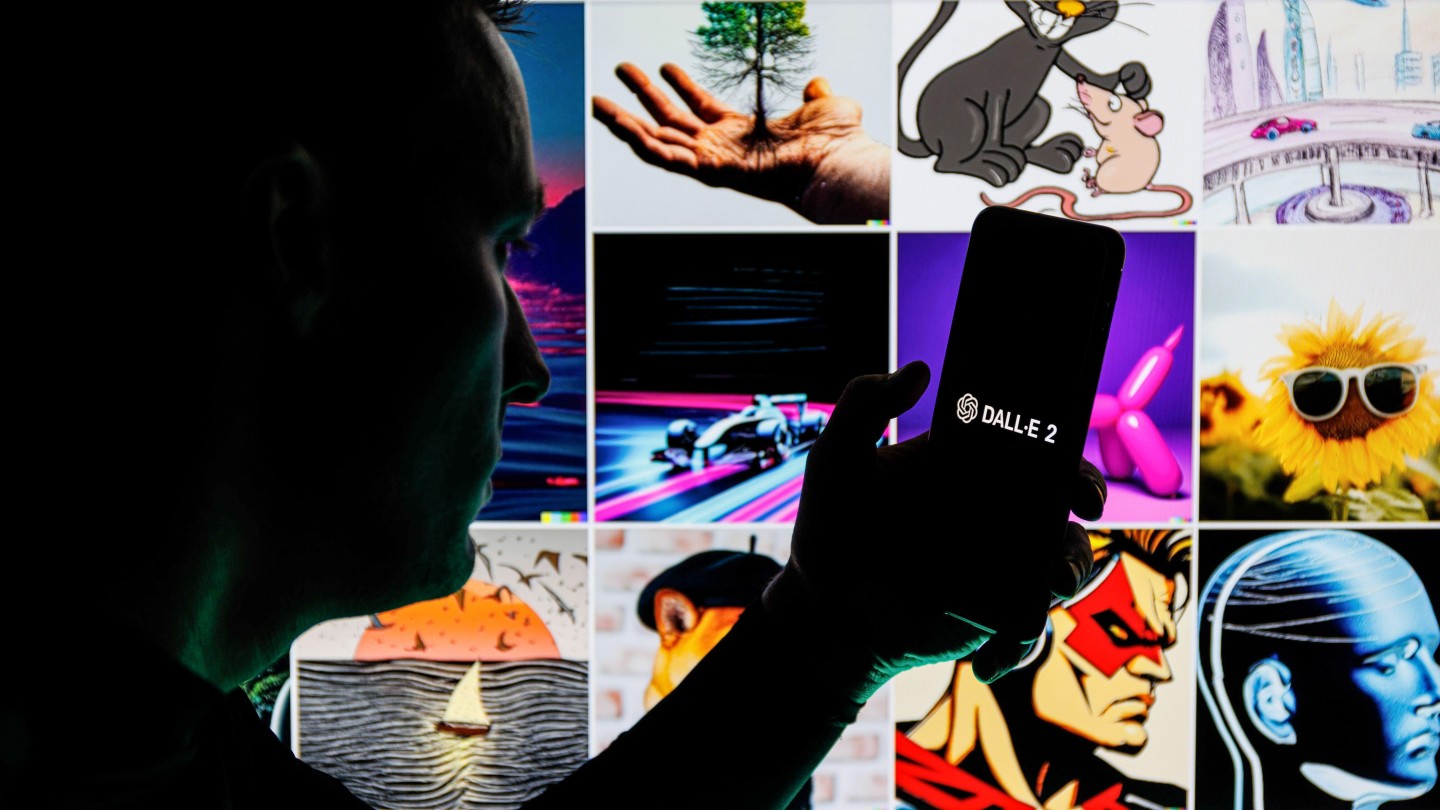Industry weighs potential of AI-designed watches

Roula Khalaf, Editor of the FT, selects her favourite stories in this weekly newsletter.
Over the past year, the proliferation of artificial intelligence-generated imagery has marked a profound moment in the history of art and design. Craftspeople and connoisseurs alike have been forced to reckon with troubling questions about the role and value of human ingenuity in creating beautiful, meaningful artefacts.
The watch industry is no exception: it too has been considering what place the technology might have in its own creative processes. While some brands such as Hermès, have dismissed AI designs on the grounds that luxury will always have a human component, others are already experimenting with the possibilities.
Modern-day luxury watchmaking is highly industrialised already, with most parts machined by computer-guided milling tools, and many watches assembled with the aid of robots. But even following the advent of computer-assisted design a quarter of a century ago, the creative process is still driven by human imagination.
The industry has dined out on the reputations of creatives such as Gérald Genta, the Swiss artist and designer who in the 1970s conceived pieces such as Audemars Piguet’s Royal Oak and Patek Philippe’s Nautilus, two models that define high-end watches for many of today’s luxury consumers.
One of the most prolific and well-regarded figures in contemporary watch design is quick to talk down AI’s potential effect. “AI is just another tool that we’ll use to visualise things,” says Fabrizio Buonamassa Stigliani, Bulgari’s product creation executive director and creator of the brand’s visually complex and multi-award-winning Octo Finissimo. “Luxury means savoir-faire, made by hand. Even if someone uses AI, the product must be made by hand, by a human being.”
Rapid advances in AI text-to-image software, such as Dall-E (created by OpenAI, the US-based artificial intelligence research laboratory behind ChatGPT), Midjourney, and the open-source system Stable Diffusion from Stability AI, mean that anyone can now generate their own watch designs using just a smartphone and a few prompts.
“The application of imaging models like Stable Diffusion XL holds immense potential to revolutionise the design and creative space,” says Shelley Niu, a senior designer at Stability AI. “These models offer designers an invaluable toolkit to accelerate their ideation and decision-making processes and to explore uncharted territories of creativity. You can liken it to having a 24/7 idea generator by your side, or getting a burst of inspiration from the future.”
However, few long-established luxury watch brands appear ready to discuss whether or how they are experimenting with AI. Richemont, for example, the Swiss group behind brands such as Cartier, Jaeger-LeCoultre and Vacheron Constantin, declined to comment on the role AI might have in its businesses.
Instead, it is left to young, independent, sometimes maverick brands to set the pace. George Bamford, founder and owner of the London-based customiser Bamford Watch Department and the watch company Bamford London, says the sector is “still at the Napster stage of AI” — a reference to the upstart file-sharing service that disrupted the music industry in the early 2000s. “It could be a cliff we end up falling off, or a mountain we climb to discover a beautiful view. It’s good to understand it, or to fail fast.”
Bamford has been using Midjourney for around a year, but not for finished watch designs. “We were working on a collaboration with Chopard and I wanted to describe what I wanted the watch to look like to my team, but it was really hard,” he says. “I went to Midjourney and put in a description of what I wanted, and it threw out loads of ideas that became starting points that meant the team had a springboard to go forward. It’s saved me time.” Bamford says he also used AI to help develop the campaign artwork to launch the watch.

Others have been more dismissive, comparing the emergence of AI-generated watch design to once-hyped digital threats that the industry easily took in its stride, such as non-fungible tokens. Only two years ago, brands were experimenting with NFT technology, believing a new collector market might be about to emerge. But it never materialised.
Stigliani, though, says that the comparison between AI-generated watch design and NFTs only goes so far. “AI is more dangerous because the limit is difficult to see,” he says. But he speculates that it could ultimately be good for industries defined by hand-craftsmanship: “A handmade object made by an artisan will be even more ‘wow’.”
Smartwatches, he thinks, make for a better point of comparison. “We were very scared [of smartwatches] in Switzerland,” he says. “But in the end, we discovered that it was just another object for a different client. The biggest lesson of the connected watch is that we’re talking about a tool, and not a luxury device.”
Industry insiders confirm that watch companies have been reluctant to trial AI. “Through my collaborations, I work with a lot of different companies and I have yet to meet somebody who uses AI,” says William Massena, founder of Massena LAB, which designs limited-edition watches in partnership with independent watchmakers. “AI is not ready, it has no sense of humour, and no taste. It is watches designed by committee.”
But one of the world’s largest luxury watch retailers believes consumers will embrace AI-generated watch designs when they come on to the market. “Given the passion for horology in our market, we can certainly expect AI-designed watches to appeal to our customers,” says Hind Seddiqi, chief marketing and communications officer of Middle Eastern retailer Seddiqi Holding.
Seddiqi, who is also director-general of the biennial Dubai Watch Week, takes her prediction further. “We see it going beyond just the designing of watches, but also specifically tackling how we augment our industry and traditional craftsmanship as we continue to push the boundaries of horology,” she says.

Massena says that, even while he cannot see a future for AI-designed watches, creatives will find uses for the technology. “I have a lot of hope that AI will tell me what’s the next trend in terms of colours, shape and details,” he says.
Others argue that designers are less pivotal to consumer decisions than many suppose. One industry veteran believes that, as it becomes more sophisticated, AI could be used to design luxury watches without anyone noticing. “The base design of 99 per cent of watches is just a modification of an existing design,” says Oliver Müller, founder of Swiss watch consultancy LuxeConsult. “Designing a watch is a Lego box where you adapt existing references to your specs. There are exceptions, but there is not much disruptive design.”
Bamford, whose business has delivered watches made in partnership with figures as diverse as Snoopy and Kylie Minogue, has another take. “AI works on old designs, so if you want to merge two existing influences and match a G-Shock with a Tag Heuer, it’s good for that, but it can’t create something new,” he says. “I wouldn’t use it for designing a watch.”
Despite confidence in her product, Niu of Stability AI says it is not about to make designers redundant. “Make no mistake, the human spark is still very much needed in the process,” she says. “These models can’t replicate that ‘aha’ moment when a design just clicks. Our emotions, experiences and gut feelings remain the X factor that makes our designs uniquely ours.”
If AI is to have an impact on the watch industry, it may only be to play into the current trend for lower volumes and higher price points for traditional Swiss-made watches. “With AI, the object made by hand will be even more expensive and for even fewer people,” says Stigliani.
Comments